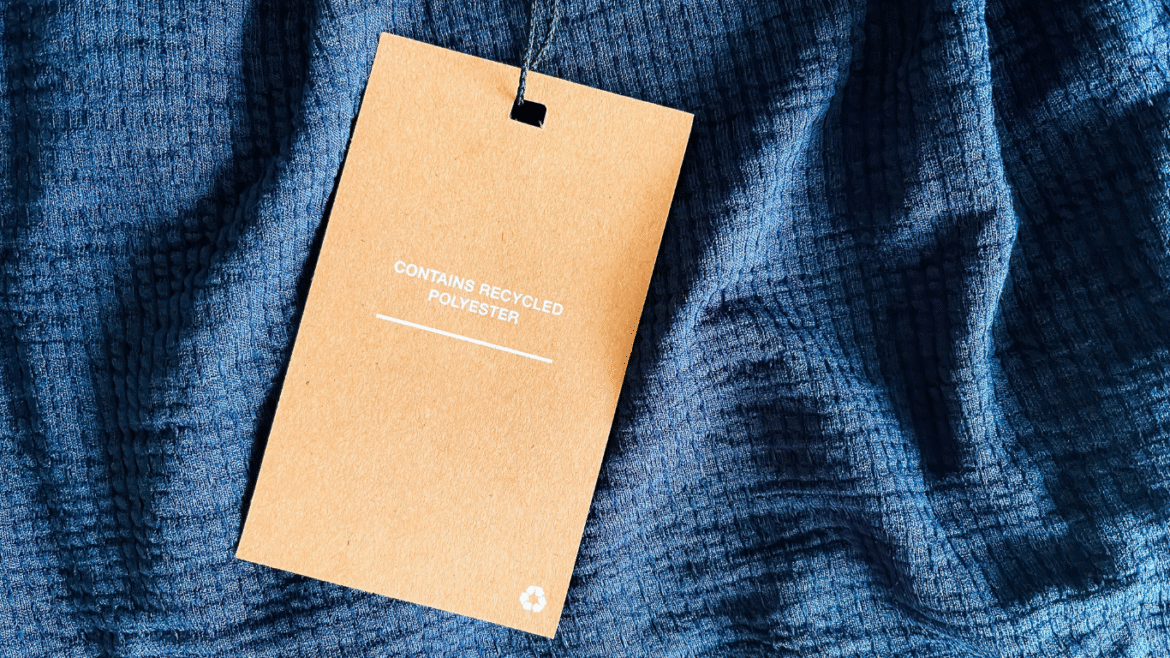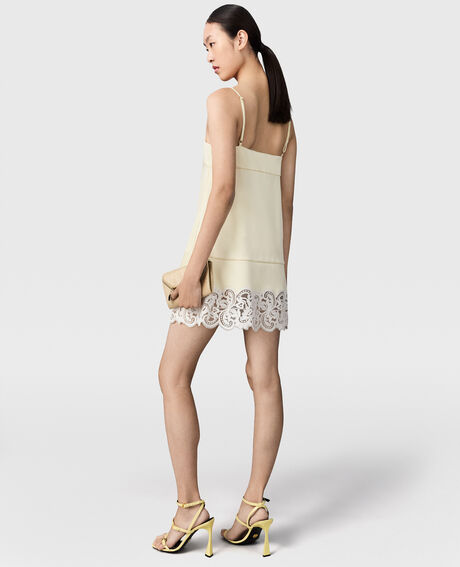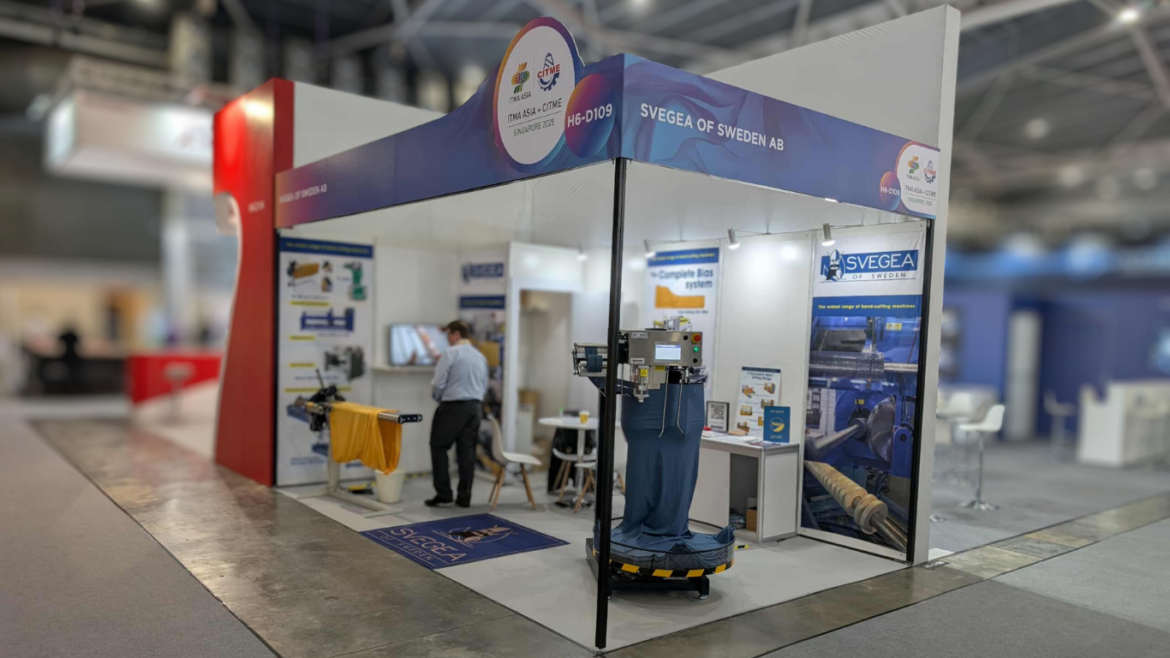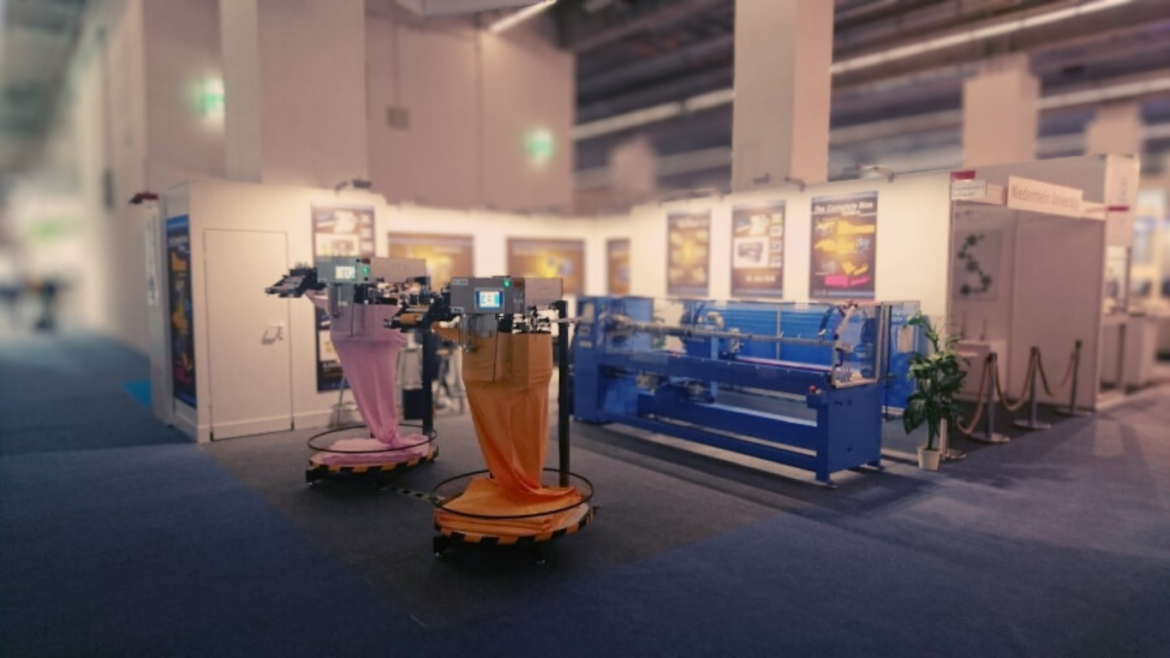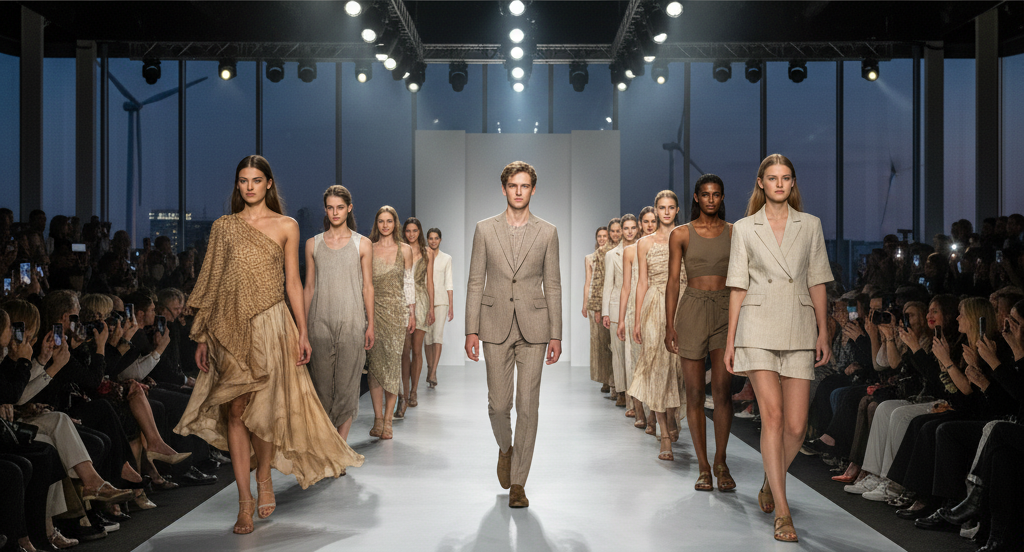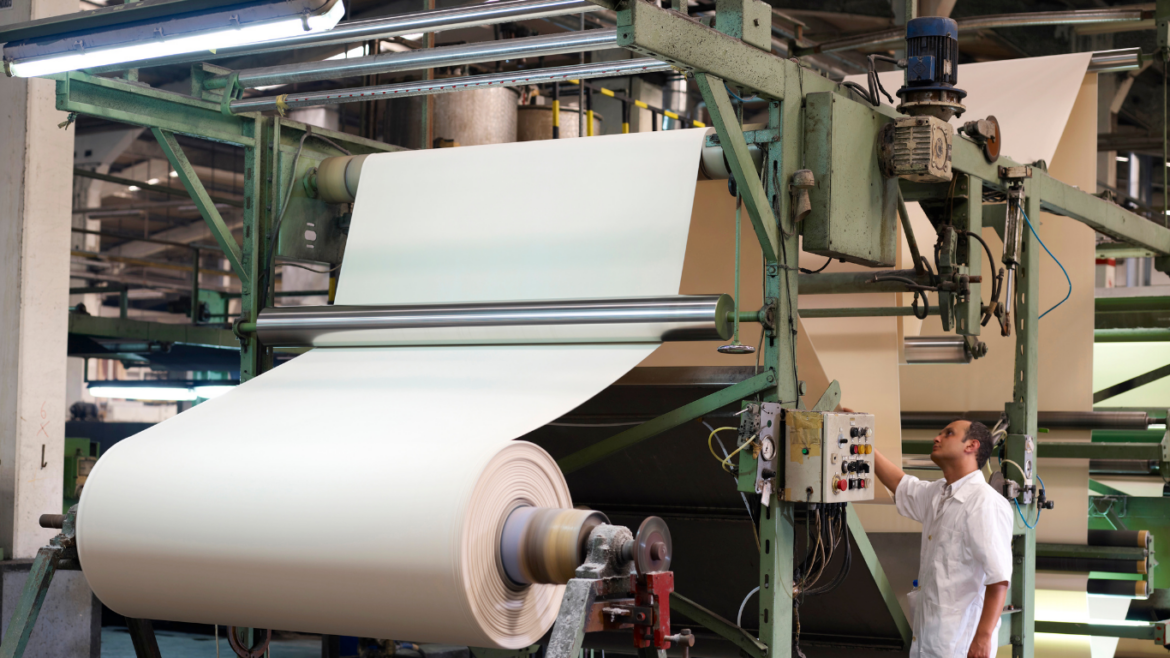Textile trends in 2026 promise big changes for garment and textile manufacturers in India, the USA, and South America. Manufacturers must adapt to sustainability demands and smart innovations now. These shifts will shape production lines and profits.
Sustainability Leads the Way
Eco-friendly fabrics top textile trends in 2026. Recycled polyester and nylon grow fast, pushed by EU rules for recyclable clothes by 2030. Lyocell markets double to $3.4 billion by 2032 from closed-loop processes. Blends of hemp or recycled cotton appear in activewear. For that reason, factories upgrade to meet global standards.
Bio-based materials surge too. Mycelium leather hits $336 million by 2033, used by brands like Stella McCartney. Banana fiber from waste stems spins into strong cloth. These options cut carbon footprints sharply. Indian exporters eye Europe amid US tariffs, where 29% of $38 billion exports went last year. Portugal’s Porto hub blends craft with tech for high-end textiles. Thus, manufacturers gain an edge in competitive markets.
Smart and Technical Textiles Rise
The technical textiles boom is expected to grow by $481 billion by 2035 at a 6.55% CAGR. Smart fabrics with sensors and energy-harvesting tech lead textile trends in 2026. AI detects defects early, cuts waste. Nano-engineered materials boost performance in autos and medical gear. Demand from construction drives growth.
In the USA and India, wearable tech integrates into apparel. Phase-change fabrics regulate temperature. Portugal firms innovate with full value chains nearby. As a result, production speeds up. Global fiber output nears 160 million tonnes by 2030, but recycled shares must climb. Factories that adopt these stay ahead.
Aesthetic Shifts Reshape Designs
Dots dominate prints with +55% growth in Europe for big dots. Brut denim rises +10%, raw and stiff for authentic looks. Romantic fabrics like lace skirts grow +20% in the EU, +13% in the USA. Checked patterns adapt to summer, zebra prints hit +21%.
Textures return strong. Ruffles and bubble hems trend +20%. Purple hues from lilac to plum add vibrancy. Creamy yellows like vanilla become neutrals. Textile trends in 2026 mix these with sustainability. Manufacturers layer them into versatile lines. Runways from Dior to Zimmerman prove demand.
Regional Impacts for Manufacturers
India faces US tariffs, so exporters cut prices and shift to the EU’s $137 billion trade. Facilities upgrade for ethical sourcing. USA buyers push recycled content amid consumer surveys showing 60% prioritize green. Portugal excels in quality home textiles at events like Intertex 2026.
Challenges persist, like low recycling rates under 1% for textiles. Yet opportunities abound in bio-leathers and cellulosics. Therefore, cross-border partnerships thrive. Technical markets hit $271 billion in 2026. Demographics demand scalable, eco-tech solutions now.
Future-Proof Your Production
Textile trends in 2026 demand action from manufacturers. Bold colors, animal prints, and smart hybrids redefine wardrobes. Investments in circular tech pay off long-term. Regulations force shifts, but innovators win big.
Ready to lead? Partner with Svegea of Sweden for precision cutting machines that slash waste and boost efficiency. Our 70-year expertise in sustainable textile production fits India, the USA, and Portugal perfectly. Contact us to upgrade your lines and capture 2026 trends. Act now for greener, faster output.
The fashion world is no longer just about the runway—it’s about revolution. Driven by environmental urgency and consumer demand, the industry must fundamentally transform the way garments are made. This isn’t just a trend; it’s a massive opportunity to build a better, cleaner, and more efficient future. Right at the foundation of this revolution are automated textile cutting machines. These aren’t just faster tools; they are the engines of precision, radically redefining the textile processing industry. For any forward-thinking garment or textile manufacturer, these systems are no longer optional—they are essential for meeting the demands of the modern, responsible market.
The Heartbreak of Manual Cutting: Waste, Inefficiency, and Lost Profit
Let’s face the harsh reality of traditional cutting: it’s messy, costly, and wildly inefficient. Manual processes inevitably lead to jagged edges, misaligned patterns, and an avalanche of unusable offcuts. This isn’t just frustrating—it’s a critical financial and environmental drain.
The numbers are staggering: The fashion industry dumps over 92 million tons of textile waste annually. Poorly executed first cuts simply waste too much material. Manufacturers throw literal profit into a landfill.
The antidote? The uncompromising accuracy of automated fabric cutting machines. These systems are programmed perfectionists. They use every millimetre of material, slashing error rates and transforming mountains of scrap into perfectly optimized components. The result is a leaner, greener, and far more profitable production line.
Where High-Speed Efficiency Meets Deep Environmental Commitment
Investing in automated fabric cutting machines isn’t about compromise; it’s about optimization. It proves that you don’t have to sacrifice speed for sustainability—you can have both.
Here’s the powerful equation:
- Unparalleled Precision: Say goodbye to waste! Automation cuts fabric wastage by up to 30%.
- Power Smart: Modern automated fabric cutting machines are energy-sippers, dramatically lowering your carbon footprint and operational utility costs.
- Speed Without Stress: Achieve lightning-fast throughput while maintaining pristine quality and consistency.
- Elevated Workforce: Free up your skilled workers from repetitive cutting tasks, allowing them to focus on high-value, complex challenges.
These advantages aren’t theoretical—they lead to immediate, quantifiable success: faster market delivery, rock-solid consistency, and simple compliance with global standards like ISO 14001.
Garment Cutting Machinery: Real-World Wins
The shift to automated fabric cutting machines is already creating global success stories:
- A major garment factory in Bangladesh reported a 25% reduction in fabric waste within months of their automation launch.
- A Portuguese knitwear specialist achieved a 40% increase in cutting speed while maintaining a flawless output record.
When global brands demand circular fashion models and net-zero strategies, the use of automated textile cutting machines is the non-negotiable step manufacturers must take. Investing in these solutions doesn’t just keep you current—it positions you as a leader setting the pace for the industry.
The Business Blueprint: Why You Can’t Afford Not to Automate
The business case for advanced fabric handling is irresistible:
-
- Financial Health: Less waste immediately equals lower spending on raw materials.
- Rapid ROI: Increased speed and reduced error rates translate directly into faster cash flow and profitability
- Brand Power: Sustainability is a competitive advantage. Showing commitment enhances your reputation with conscious consumers and key retail partners.
- Future-Proofing: Easily meet rigorous regulatory standards for waste and energy consumption.
In today’s cutthroat market, these efficiencies aren’t luxuries—they are the bedrock of lasting success.
Ready to Transform Your Production Line?
The future of fashion starts with a precise cut. If you are ready to stop calculating waste and start maximizing every yard of fabric, it’s time to explore the best technology available.
Svegea of Sweden offers precision-engineered automated fabric cutting machines trusted globally for their uncompromising reliability, durability, and eco-conscious design.
Take the next step: Contact Håkan Steene at h.steene@svegea.se to schedule a personalized product demo and discover how Svegea can immediately elevate your textile operations.
The ITMA ASIA + CITME exhibition in Singapore wasn’t just another industry event—it was a heartbeat moment for the textile world. For us at Svegea of Sweden, it was a chance to stand shoulder-to-shoulder with visionaries, innovators, and changemakers who believe that textile manufacturing can—and must—be a force for good
With over 840 exhibitors and thousands of passionate attendees, the energy was electric. The conversations weren’t just about machines; they were about meaning. About how we, as a global community, can drive sustainability, embrace digital transformation, and build a supply chain that respects both people and planet.
At our booth, we weren’t just presenting technology—we were planting seeds for a better future.
Empowering Asia’s Green Transition
Singapore was the perfect stage for a pivotal shift. By bringing Swedish innovation closer to the dynamic markets of South and Southeast Asia, we’re helping manufacturers leap forward—not just in productivity, but in purpose.
We’re not here to sell machines. We’re here to build partnerships. To guide manufacturers through the maze of global regulations, ethical standards, and environmental goals. The conversations I had were rich with urgency and optimism—focused on resource efficiency, circularity, and renewable integration. Svegea’s solutions aren’t just engineered for performance; they’re designed to empower transformation.
Global Connection, Shared Values
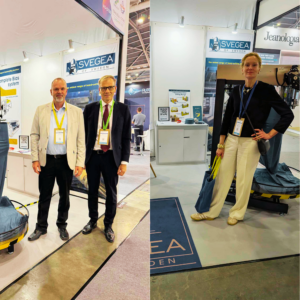 One of the most inspiring moments was welcoming Anders Sjoberg, Swedish Ambassador to Singapore, to our booth. His presence was more than symbolic—it was a powerful endorsement of Sweden’s leadership in ethical innovation and sustainable industry.
One of the most inspiring moments was welcoming Anders Sjoberg, Swedish Ambassador to Singapore, to our booth. His presence was more than symbolic—it was a powerful endorsement of Sweden’s leadership in ethical innovation and sustainable industry.
We were also honored to host Therese Premler-Andersson, General Secretary of TMAS. Her visit reminded us that collaboration is the cornerstone of progress. No single company can solve the textile industry’s challenges alone. But together—through shared knowledge, mutual respect, and bold action—we can reshape the future of fashion and manufacturing.
Beyond the Sale: A Promise to the Future
As we dismantled our booth, what lingered wasn’t the hum of machinery—it was the spirit of possibility. ITMA ASIA + CITME reaffirmed our belief that innovation and ethics must walk hand in hand. The focus wasn’t on quantity—it was on quality, impact, and intention.
These four days have galvanized our mission. We will continue to develop durable, high-performance technologies that enable manufacturers to produce exceptional garments while protecting our planet. The journey doesn’t end here—it begins anew, with deeper partnerships and bolder goals.
Tack för stödet (Thank you for the support). If you’re ready to elevate your sustainable production, I invite you to connect with our team leader, Håkan Steene, for a hands-on demonstration of the EC COLLARETTE 200 and EC 50: h.steene@svegea.se.
Let’s build the future—together.
In today’s fast-paced textile industry, precision, speed, and sustainability are no longer optional — they’re essential. That’s why manufacturers around the world are turning to Swedish textile cutting machinery — specifically Svegea, a company that’s been redefining automated cutting solutions since 1952.
Svegea’s Swedish-engineered solutions help manufacturers by focusing on automation, sustainability, and user-friendly design to improve efficiency, reduce waste, and adapt to market demands. Their machines support the creation of smarter, more connected factories through integration with Industry 4.0 principles, making them ideal partners for reshoring efforts and sustainable production goals.
Automation: The Foundation of Competitive Manufacturing
High-Speed Precision Cutting
Svegea’s textile cutting machinery from Sweden is engineered for high-speed, precise cutting, which helps produce consistent quality and faster production times. Every machine is designed to maintain exacting standards even at maximum operational speeds, ensuring that manufacturers can scale production without sacrificing quality.
- EC-450XF Collarette Cutting System: Awarded at Texprocess 2023 for its innovation and sustainability, this fully automatic system delivers high-speed, low-waste performance with precision that’s become the industry benchmark.
- Euro-Collarette Fully Automatic Series: These models feature the intuitive E Drive 2 panel and two-step cutting for multiple bands — ideal for high-volume operations requiring consistent output.
Automated Processes That Reduce Labor Dependency
Svegea integrates automatic tube sewing units for creating sewn tubes in rolled or flat-folded forms, reducing the need for operator assistance and minimizing human error.
- TSU 200 A/AF Tube Sewing Unit: Minimal operator input, maximum efficiency. This system exemplifies how automation enables manufacturers to redirect skilled labor to higher-value tasks.
- Bias Cutter / Winder 200: Smooth unwinding and rewinding into single ply rolls with minimal manual intervention.
- Bias Cutter CMB 1800: Versatile and adaptable across fabric types, streamlining the entire bias binding process.
Supporting Reshoring with Smart Automation
Automation facilitates reshoring operations by making local manufacturing more competitive and efficient. Sweden’s textile cutting machinery industry leads this transformation, offering manufacturers the tools they need to bring production home without sacrificing cost-effectiveness.
Sustainability: Engineering for a Better Future
Precision That Reduces Waste
Precision cutting and automation help maximize fabric usage, minimizing material waste. Svegea’s machines are engineered to optimize every centimeter of fabric, contributing directly to both profitability and environmental responsibility.
- Strip Cutter CMS 1800A2: High-speed cutting for bias tape, trims, and bindings with advanced nesting algorithms that reduce offcut waste.
- TSO 380 G/GF Tubular Knit Slitter: Reduces waste and improves material yield through intelligent cutting patterns.
Energy-Efficient Engineering
Svegea’s machinery is designed to be energy efficient, lowering consumption and environmental impact. Every system is optimized for minimal power draw without compromising performance, making textile cutting machinery from Sweden a smart choice for manufacturers committed to reducing their carbon footprint.
- RRS-800 Fully Automatic Roll Slitting Machine: Offers motorized knife control and adjustable speed for consistent quality while maintaining low energy consumption throughout extended production runs.
Supporting Circular Economy and Recycled Materials
By improving garment durability and promoting longevity through efficient production, Svegea’s machines contribute to a more circular economy. The advanced technology can support the use of recycled materials in production, accommodating the varied characteristics of reclaimed fabrics without compromising cut quality.
- FIM CMI 210 R / ZR Fabric Inspection Machine: Detects defects and inconsistencies in both virgin and recycled materials before they reach the cutting floor, ensuring quality regardless of source.
User-Friendly Design: Versatility Meets Accessibility
Adaptable Across Material Types
The cutting machines can handle a wide range of materials, from delicate silks to heavy-duty industrial textiles. This versatility makes Swedish textile cutting machinery ideal for manufacturers serving diverse market segments.
- SV/BK Band Knife Series: Precision cutting for everything from delicate silks to heavy-duty fabrics, with easily adjustable settings for quick material transitions.
- Strip Cutter FA 500: Heavy-duty and reliable, perfect for long production cycles with materials ranging from PVC to non-woven fabrics.
Quick Changeovers for Maximum Productivity
User-friendly interfaces and the ability to quickly switch between patterns and materials reduce downtime and enhance productivity. The intuitive E Drive 2 control panel makes complex operations accessible to operators at all skill levels.
- Euro-Collarette Semi-Automatic Series: A semi-automatic option that cuts two bands simultaneously, with widths ranging from 16 to 140 mm — changeable in minutes, not hours.
Customization for Niche Applications
Svegea provides custom-specific machines and units for niche applications like bias cutting, and can adapt to diverse customer preferences. This flexibility ensures that whether you’re producing standard collarettes or specialized technical textiles, there’s a solution engineered specifically for your needs.
- W 2100S Fabric Rewinding Machine: Perfect re-rolls every time, with customizable tension and speed settings for different fabric types.
Industry 4.0 Integration: Building Smarter Factories
Sweden’s textile cutting machinery leads the way in smart manufacturing integration. Designed to connect seamlessly with modern factory management software the Svegea system enables:
- Real-time production monitoring and quality control
- Predictive maintenance scheduling to minimize downtime
- Data-driven optimization of cutting patterns and material usage
- Integration with inventory and supply chain management systems
This connectivity transforms individual machines into components of an intelligent manufacturing ecosystem. The result? Long-term competitiveness in an increasingly digital industry.
The Swedish Advantage: Seven Decades of Innovation
Textile cutting machinery from Sweden represents more than a geographic label — it’s a commitment to quality, innovation, and sustainability. Svegea embodies the best of Swedish engineering: meticulous attention to detail, long-term reliability, and environmental responsibility.
Svegea has been serving global textile manufacturers since 1952, continuously innovating to meet the evolving demands of modern production. This heritage of excellence makes Swedish textile cutting machinery a global benchmark for quality, sustainability, and technological advancement.
Ready to Transform Your Production Line?
Experience how premium Swedish textile cutting machinery can revolutionize your operations. Whether you’re looking to reshore production, reduce waste, improve efficiency, or build an Industry 4.0-ready factory, Svegea has the solutions you need.
Explore Svegea’s full range of automated textile solutions at svegea.se. For a personalized product demo and consultation, contact Håkan Steene at h.steene@svegea.se.
Let’s build the future of sustainable, efficient textile manufacturing — together.
The fashion revolution isn’t just a trend—it’s a full-blown transformation. It’s bold, it’s beautiful, and it’s reshaping everything from haute couture to humble factory floors. Circular fashion, once a niche concept whispered among eco-warriors, is now the heartbeat of the industry. And guess what? It’s not just designers and influencers leading the charge. Garment and textile manufacturers are stepping into the spotlight, armed with smart machines and sustainable strategies.
Circular Fashion: More Than Just a Buzzword
Let’s be real. Fashion has always been about reinvention. But the fashion revolution is different. It’s not about chasing the next look; it’s about changing the way we make, wear, and reuse clothing. Circular fashion means designing garments that last longer, can be repaired, recycled, or repurposed, and don’t end up as landfill clutter.
Consumers are loving it. From thrifted treasures to biodegradable sneakers, they’re choosing pieces that tell a story—and respect the planet. But behind every conscious choice is a manufacturer making it possible.
The Factory Floor Joins the Revolution
Here’s where things get exciting. The fashion revolution isn’t just happening on runways or in retail. It’s happening in factories, where smart technology is turning sustainability into profitability.
Modern fabric inspection systems now detect flaws before cutting begins, reducing waste and improving quality. Automated cutting machines use AI to map out the most efficient layouts, saving material and time. These innovations aren’t just cool—they’re crucial.
According to the Stockholm Resilience Centre, circular fashion models are key to reducing environmental impact and building resilient supply chains. And manufacturers who embrace these models are seeing real results.
Fashion Revolution = ROI Revolution
Let’s talk numbers. The fashion revolution isn’t just good for the Earth—it’s good for business.
By optimizing material use with smart inspection and cutting tech, manufacturers reduce fabric waste, lower production costs, and increase output. That means better margins and faster turnaround. Plus, sustainable practices attract eco-conscious brands and consumers, boosting demand and loyalty.
A study published by MDPI found that circular economy strategies like reuse, recycling, and reduction are not only environmentally beneficial—they’re economically viable. In other words, sustainability sells.
From Catwalk to Cutting Table
Designers may sketch the vision, but manufacturers bring it to life. The fashion revolution depends on this partnership.
Imagine a designer creating a zero-waste collection. To make it real, the factory needs machines that can handle unconventional fabrics, cut with precision, and minimize leftovers. That’s where innovation meets execution.
Why Manufacturers Should Care
Still wondering if the fashion revolution is worth the investment? Let’s break it down:
- Relevance: Brands are demanding sustainable production. If you can’t deliver, they’ll find someone who can.
- Efficiency: Smart machines reduce waste, save time, and improve consistency.
- Compliance: Regulations around textile waste are tightening. Circular practices help you stay compliant.
- Growth: Eco-conscious consumers are driving demand. Be ready to scale sustainably.
This isn’t just a movement—it’s a market shift. And manufacturers who adapt will thrive.
The Future Is Circular—and Smart
Circular fashion is here to stay. And the fashion revolution is only getting stronger. From recycled fibers to AI-powered cutting tables, the tools are ready. The demand is real. And the opportunity is massive.
If you’re a garment or textile manufacturer, now is the time to act. Don’t just watch the revolution—join it.
“The fashion revolution is not just about what we wear—it’s about how we make it. At Svegea, we’re committed to helping garment and textile manufacturers stay ahead by innovating our machinery to support circular fashion models. Sustainability and profitability can go hand in hand.” — Hakan Steene, Managing Director, Svegea of Sweden
Contact Hakan Steene at h.steene@svegea.se to explore Svegea’s innovative textile machinery. These sustainable solutions are designed to help your company stay relevant, reduce waste, and boost ROI in the age of the fashion revolution.
Fabric shrinkage is one of the most overlooked challenges in garment manufacturing. It can lead to misaligned patterns, wasted material, and inconsistent sizing. If you want to prevent fabric shrinkage before cutting, you need to understand what causes it and how to control it.
Let’s explore practical ways to reduce shrinkage and improve cutting accuracy — without adding complexity to your workflow.
Why Does Fabric Shrink?
Shrinkage happens when fibers contract due to heat, moisture, or mechanical stress. Natural fabrics like cotton, rayon, and linen are especially prone to this. Even synthetic blends can shrink slightly under certain conditions.
When fabric is cut before it stabilizes, the final garment may twist, pucker, or lose its intended shape. That’s why it’s essential to prevent fabric shrinkage before cutting — not after.
Pre-Shrinking vs. Relaxing: What’s the Difference?
Pre-shrinking involves washing or steaming the fabric before cutting. While this method works, it’s often inconsistent and time-consuming. Relaxing, on the other hand, allows the fabric to settle naturally. It reduces internal tension caused by rolling, folding, or transport.
For knitwear and stretch fabrics, relaxing is especially effective. It helps prevent fabric shrinkage before cutting by allowing fibers to return to their natural state.
5 Proven Ways to Prevent Fabric Shrinkage Before Cutting
1. Use a Fabric Relaxing Machine
A fabric relaxing machine gently unwinds and settles the fabric. It reduces tension and helps stabilize the material. This is one of the most reliable ways to prevent fabric shrinkage before cutting in high-volume production.
2. Control Room Conditions
Humidity and temperature affect fiber behavior. Keep your cutting room at a consistent humidity level (around 60–70%) and avoid sudden temperature changes.
3. Let Fabric Rest
If you don’t have a relaxing machine, lay the fabric flat and let it rest for 12–24 hours. This passive method still helps reduce shrinkage and curling.
4. Test Shrinkage Rates
Before bulk cutting, test a small swatch. Wash or steam it, then measure the change. This helps you adjust your cutting patterns and prevent shrinkage before cutting large batches.
5. Avoid Immediate Cutting
Fabric fresh off the roll is often under tension. Give it time to settle before cutting to avoid distortion and waste.
Why It Matters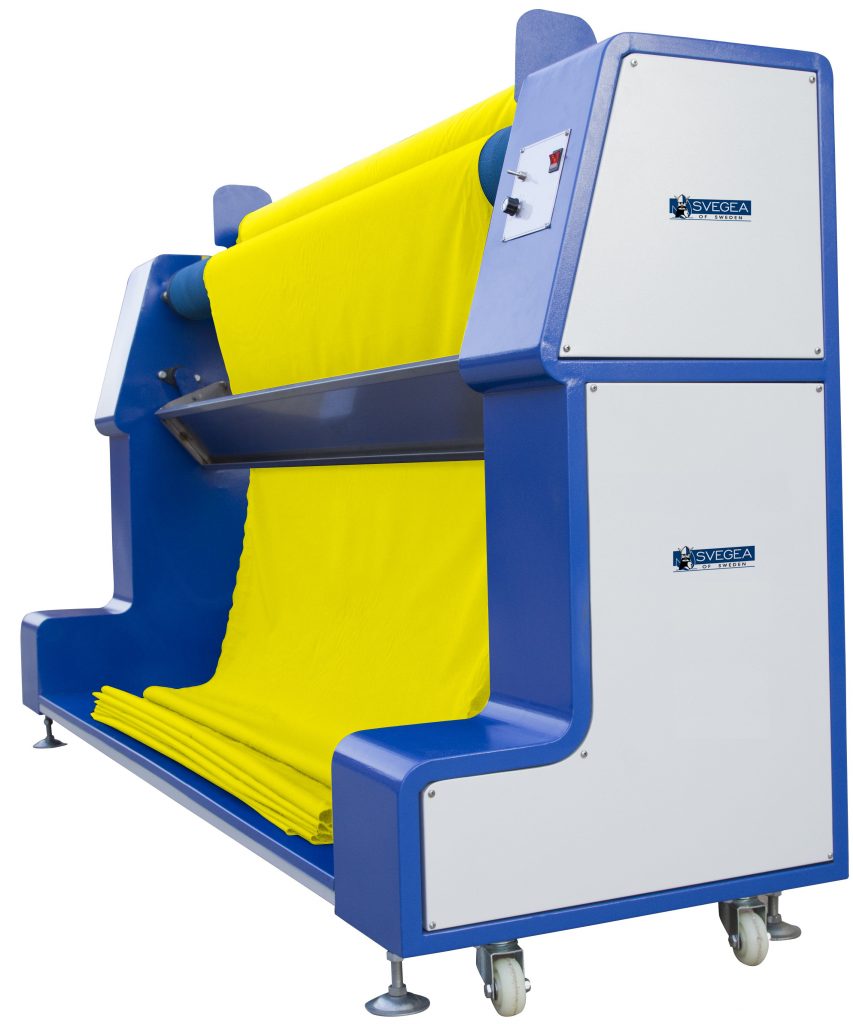
Controlling fabric shrinkage before cutting is essential for consistent garment quality. Shrinkage can distort patterns, misalign seams, and lead to costly rework. By stabilizing fabric early—through relaxing, resting, or testing—you reduce waste and improve production accuracy. This not only protects your materials but also strengthens your brand’s reliability. Manufacturers who take shrinkage seriously deliver better-fitting garments and fewer returns. In a competitive market, precision matters. Starting with properly prepared fabric sets the tone for everything that follows.
Integrating Fabric Relaxing System
Want to improve cutting accuracy and reduce waste? Start by integrating fabric relaxing into your workflow. Whether through manual rest periods or automated systems, the results will speak for themselves.
Many manufacturers now rely on purpose-built equipment like fabric relaxing machines to stabilize material before cutting. These systems gently release tension in the fabric, helping reduce shrinkage and distortion. One example is the CR-210 Fabric Relaxing Machine, which is designed to support high-volume production environments where consistency is key.
By making fabric relaxation a standard part of your process, you set the stage for cleaner cuts, better fit, and fewer production errors.
For a product demo or expert guidance, email Håkan Steene at h.steene@svegea.se
Garment factories across India, Bangladesh, Vietnam, and South America are facing a new reality. Global demand is rising, lead times are shrinking, and buyers expect consistent quality at competitive prices. To stay ahead, manufacturers must rethink how they produce — and that starts with smarter machines.
One of the most effective ways to improve efficiency is by investing in intelligent textile machines for apparel production. These machines don’t just automate tasks. They optimize them. From slitting tubular knits to cutting collarettes, intelligent systems help reduce waste, speed up output, and increase return on investment.
The Hidden Cost of Manual Processing
Many factories still rely on manual or semi-automated systems for fabric preparation. While this may seem cost-effective at first, it often leads to:
- Uneven cuts and inconsistent sizing
- Higher fabric waste
- Slower production cycles
- Increased labor fatigue and errors
These issues add up. Over time, they affect profitability, delivery timelines, and customer satisfaction.
Smarter Machines, Better Results
Intelligent textile machines for apparel production solve these problems with precision and consistency. They’re designed to handle high volumes with minimal supervision, making them ideal for export-driven factories and fast fashion suppliers.
Take the Svegea TSO 380 Tubular Knit Slitter, for example. This machine is built for speed and accuracy. It slits tubular knitted fabrics open with clean edges, ready for further processing. It’s easy to operate, requires minimal maintenance, and integrates smoothly into existing production lines.
Efficiency That Pays Off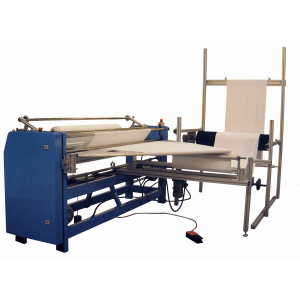
Factories using machines like the TSO 380 report:
- Up to 15% reduction in fabric waste
- Faster turnaround times
- Fewer production errors
- Lower labor costs
These improvements lead to measurable ROI — often within the first year of installation. That’s why more manufacturers are turning to intelligent textile machines for apparel production as a long-term strategy.
Flexibility and Integration
Modern apparel production demands flexibility. Machines must adapt to different fabric types, styles, and order volumes. The best systems are designed to handle knits, wovens, and technical textiles without constant retooling.
Svegea’s machines are known for their versatility. Whether you’re processing tubular knits or cutting narrow strips, their equipment delivers consistent results across a wide range of materials.
Reliability You Can Count On
Downtime is expensive. That’s why reliability matters. Manufacturers need machines that run smoothly, require minimal maintenance, and come with strong technical support.
Svegea of Sweden has built its reputation on engineering excellence and long-term durability. High-volume factories around the world — including across Asia and Latin America — rely on the intelligent textile machinery backed by responsive teams for support.
Investing in Smart Solutions
The future of garment manufacturing belongs to those who invest in smart, scalable solutions. By integrating intelligent textile machines for apparel production, factories can boost efficiency, reduce waste, and stay competitive in a fast-moving global market.
If you’re ready to upgrade your production line, explore Svegea’s TSO 380 Tubular Knit Slitter and other solutions at www.svegea.se.
For a product demo, email Håkan Steene at h.steene@svegea.se
The fashion industry thrives on change—but in recent years, that change has accelerated into a full-blown revolution. No longer are brands defined by two seasonal collections and predictable production cycles. Today’s consumers demand personalization, limited editions, and lightning-fast turnaround. They expect garments that feel tailor-made, not mass-produced—and they want them now.
For garment and textile manufacturers, this shift isn’t just a trend—it’s a wake-up call. Meeting these demands requires more than creativity; it calls for operational reinvention. From design to delivery, every stage must be faster, smarter, and more adaptable. That’s where automated textile production enters the picture, enabling manufacturers to respond with precision, speed, and scalability.
At the heart of this transformation lies one powerful principle: flexibility.
The Rise of On-Demand Production
If one trend is reshaping the textile landscape, it’s on-demand production. Instead of stockpiling inventory and gambling on what might sell, brands now produce in smaller, agile batches—sometimes even one item at a time.
Why is this happening?
- Personalization sells. Whether it’s a custom sports jersey or a limited-edition streetwear drop, consumers crave uniqueness.
- Sustainability matters. Overproduction is one of fashion’s biggest environmental pitfalls. On-demand production helps reduce waste by making only what’s needed.
- Agility wins. Smaller runs allow brands to test the market, pivot quickly, and scale up with confidence.
In short, mass customization is overtaking mass production. And manufacturers who fail to adapt risk being left behind.
Flexibility on the Factory Floor
On-demand production sounds ideal—but it’s not without challenges. Small-batch runs and rapid turnarounds demand machinery that can:
- Switch between materials and specs with minimal downtime
- Deliver consistent precision from the first piece to the last
- Handle custom orders without compromising efficiency
This is where a robust textile solution becomes essential. Automated textile production systems allow manufacturers to pivot seamlessly between orders while maintaining quality and controlling costs. Flexibility isn’t just a feature—it’s the foundation of future-ready manufacturing.
Real-World Impact: Sportswear & Activewear
Take the booming sportswear market. Teams, clubs, and fans expect customized gear—jerseys with names, leggings in unique colorways, and performance wear tailored to niche needs.
Without flexible cutting equipment, these orders would be slow, error-prone, and costly. But with Svegea’s Automatic Collarette Cutters:
- Factories can switch quickly between team orders with different trims
- Precision cutting ensures every collar and band fits perfectly
- Small-batch customization becomes streamlined and scalable
This isn’t just operational efficiency—it’s a strategic edge.
Flexibility = Future-Proofing
Fashion moves fast. Trends go viral and vanish in weeks. Consumer loyalty shifts with every swipe. But one thing remains constant: the demand for speed, uniqueness, and sustainability.
For textile manufacturers, that means flexibility is no longer optional—it’s survival.
A modern textile solution—especially one built on automated textile production—gives factories the agility to adapt, the precision to deliver, and the confidence to scale. In a world where fashion waits for no one, that’s the difference between leading and lagging
Automated Textile Production is The Future
We can’t stress this enough. On-demand production isn’t a trend—it’s the future. Manufacturers who embrace mass customization will win contracts, delight customers, and reduce waste.
Embracing the right textile solution is essential for bridging the gap between traditional efficiency and the demands of modern flexibility. As fashion trends evolve rapidly and customization becomes the norm, manufacturers must equip their production lines to respond with speed, precision, and adaptability. The ability to shift seamlessly between small-batch orders and large-scale runs is no longer a luxury—it’s a competitive necessity.
Automated textile production is the backbone of this evolution—empowering manufacturers to meet demand without compromising quality or speed.
Svegea’s Textile Solution for Mass Customization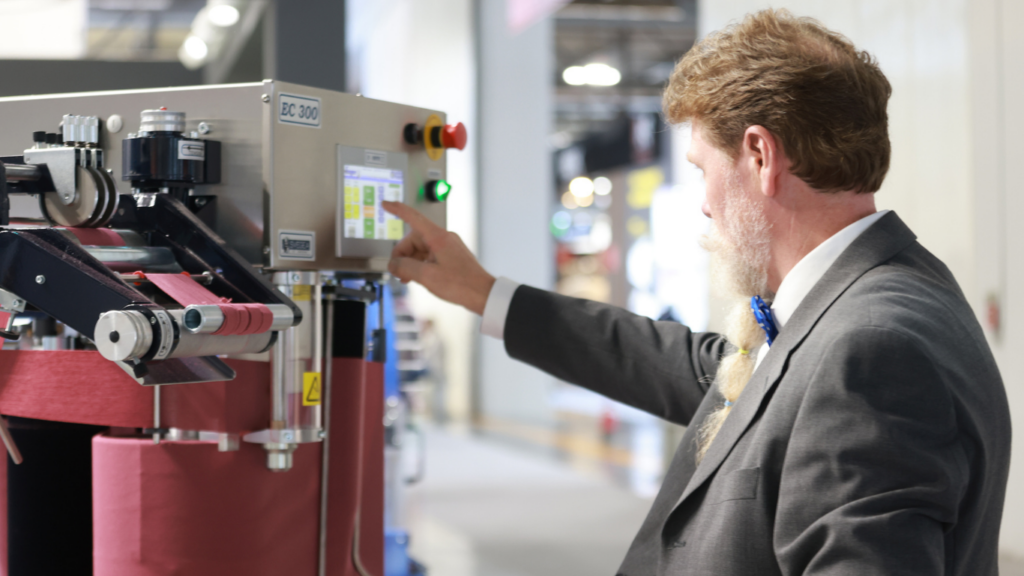
At Svegea of Sweden, flexibility isn’t just a feature—it’s our foundation. Our automated textile production solutions, including Automatic Collarette Cutters, Slitting Machines, and Band Cutting Machines, are engineered for speed, precision, and adaptability.
Here’s how Svegea supports the shift to on-demand production:
- Quick setup times: Ideal for switching between small and large batch runs
- Consistent precision: Every piece meets exact specifications, whether it’s 100 or 10,000 units
- Material versatility: Handles everything from lightweight knits to heavy-duty fabrics
- Just-in-time readiness: Designed for manufacturers who produce exactly what’s needed—no excess, no waste
By enabling manufacturers to meet the demands of today’s fast-paced, customized market, Svegea’s textile solution makes mass customization not only possible but profitable.
📩 Ready to future-proof your factory?
Contact Håkan Steene for a product demo at h.steene@svegea.se or visit https://www.svegea.se to explore our full range of textile solutions.
In modern textile manufacturing, adaptability is no longer optional—it’s essential. As demand grows for flexible production, especially in knitwear and activewear, manufacturers are turning to adaptive garment machinery to streamline operations and maintain quality.
Why Tubular Knit Slitting Matters
Tubular knit fabrics are produced in a continuous loop, which is ideal for circular knitting but not for cutting, printing, or sewing. Before these fabrics can be processed further, they must be slit and opened into flat sheets.
Without proper slitting:
– Edges may distort or curl
– Automated cutting systems can misalign
– Waste increases due to poor edge control
– Finished garments may suffer in quality
This step, though often overlooked, directly affects efficiency and product consistency.
The Role of Adaptive Machinery
Adaptive garment machinery refers to equipment that adjusts dynamically to different fabric types, production speeds, and operational conditions. In tubular knit slitting, this means:
- Automatic edge guiding for alignment
- Adjustable slitting widths for varied outputs
- High-speed operation with minimal waste
- Compatibility with both light and heavy knits
These features allow manufacturers to respond quickly to changing production needs without sacrificing precision.
Integration into Production Lines
Slitting machines are typically placed early in the workflow—after knitting and before cutting or printing. To integrate effectively, they must:
- Fit within existing layouts
- Offer intuitive controls for operators
- Require minimal maintenance
- Support continuous, high-volume use
When adaptive slitting technology is used, production lines become more responsive and less prone to bottlenecks.
Industry Applications
This machinery is especially relevant for:
- On-demand fashion production
- Mass customization models
- Sustainable textile workflows
- Technical and performance apparel
By enabling consistent slitting across diverse knit fabrics, adaptive systems support manufacturers aiming for speed, flexibility, and reduced waste.
A Significant Small Step
Tubular knit slitting may seem like a small step, but its impact is significant. With adaptive garment machinery, manufacturers gain the precision and flexibility needed to meet modern demands.
If you’re exploring ways to improve your knitwear production, consider how adaptive slitting can elevate your workflow.
To learn more or request a consultation, email Håkan at (mailto:hakan@svegea.se) or contact us.
As global demand for ethical and efficient clothing production increases, manufacturers are reevaluating every step of their production process. One area gaining renewed attention is bias cutting—a technique that enhances stretch, durability, and fabric utilization. While often overlooked, bias-cutting systems play a vital role in advancing sustainable garment production.
What Is Bias Cutting and Why Does It Matter?
Bias cutting involves slicing fabric diagonally across its grain, typically at a 45-degree angle. This method allows textiles to stretch naturally, conform to body shapes, and resist fraying. It’s especially useful in garments requiring flexibility, such as:
- Activewear
- Lingerie
- Children’s clothing
- Knit trims and collarettes
By improving fit and performance, bias cutting contributes to the creation of longer-lasting garments—an often underappreciated aspect of sustainability.
Automation and Efficiency in Bias Cutting
Traditionally, bias cutting was done manually. This process was slow, inconsistent, and wasteful. Today, automated bias-cutting systems have transformed the landscape. These machines:
- Align fabric edges with precision.
- Adjust cutting widths for different materials
- Join bias strips seamlessly using integrated sewing units
- Wind fabric under controlled tension for easy handling
As a result, manufacturers can reduce labor costs, minimize waste, and maintain consistent quality across production batches.
Sustainability Beyond the Buzzwords
Sustainability isn’t just about organic cotton or recycled polyester. It’s also about how garments are made. Bias cutting systems support sustainable garment production by:
- Reducing fabric waste through accurate slitting and joining
- Optimizing material usage, especially in high-volume runs
- Lowering energy consumption with efficient, high-speed operation
- Extending product life by improving garment performance
These benefits align with global sustainability goals and industry certifications, making bias-cutting systems a strategic investment—not just a technical upgrade.
Relevance Across Global Markets
From Southeast Asia to Scandinavia, textile manufacturers face similar challenges: rising costs, stricter regulations, and shifting consumer expectations. Bias cutting systems offer scalable solutions for:
- Localized production hubs
- Fast fashion models require agility
- Technical textile producers working with complex fabrics
Whether you’re a small-scale knitwear producer or a large garment exporter, bias cutting technology can support your sustainability roadmap.
Ready to Explore Smarter Solutions?
If you’re looking to enhance your production efficiency while supporting sustainable garment practices, it’s worth exploring what modern bias cutting systems can offer.
Contact Håkan Steene (h.steene@svegea.se) or visit www.svegea.se to learn more about how their bias-cutting solutions align with your sustainability goals.

